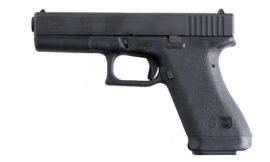The MG 34, or Maschinengewehr 34, was a versatile and influential machine gun developed by Nazi Germany in the 1930s. It became one of the most widely used machine guns of World War II, renowned for its innovative design, reliability, and adaptability in various combat roles. Here’s an overview of its history, design features, military use, and legacy:
Historical Background
The development of the MG 34 began in the early 1930s in Germany as part of the country’s rearmament efforts under the Nazi regime. Designed by Heinrich Vollmer, the MG 34 was intended to replace the heavier and less versatile machine guns of World War I. It entered service in 1936 and quickly became the standard general-purpose machine gun for the German military.
Design and Features
The MG 34 was notable for several advanced design features:
- General-Purpose Design: Designed to fulfill multiple roles, the MG 34 could be used as a light machine gun when equipped with a bipod or as a medium machine gun when mounted on a tripod or vehicle.
- Rate of Fire: It had a variable rate of fire, capable of cycling between 800 to 900 rounds per minute. This flexibility allowed gunners to adjust the rate of fire based on tactical needs and ammunition conservation.
- Quick-Change Barrel: The MG 34 featured a quick-change barrel mechanism, allowing for rapid replacement of hot or worn-out barrels to sustain continuous fire without overheating.
- Belt-Fed Ammunition: It fed from non-disintegrating metallic belts, typically holding 50 rounds of 7.92×57mm Mauser ammunition, ensuring reliable feeding and sustained fire.
- Reliability and Durability: The MG 34 was known for its reliability and durability, capable of functioning effectively in various weather conditions and combat environments.
- Innovative Construction: The MG 34 incorporated innovative construction methods, including extensive use of stamped and pressed components, which facilitated mass production and reduced manufacturing costs compared to earlier machine guns.
Military Use
During World War II, the MG 34 saw extensive use across all branches of the German military:
- Infantry Support: As a light machine gun, the MG 34 provided crucial firepower to infantry squads, supporting offensive and defensive operations with its suppressive fire capabilities.
- Vehicle and Aircraft Mounts: It was mounted on various vehicles, including tanks and armored personnel carriers, as well as used in anti-aircraft roles with appropriate mounts.
- Versatility: The MG 34’s design versatility allowed it to adapt to different combat scenarios, from mobile infantry assaults to fixed defensive positions.
Legacy and Influence
The MG 34 left a significant legacy in firearms development and military doctrine:
- Successor Developments: While the MG 34 was eventually phased out of frontline service by its successor, the MG 42, its design principles and operational success influenced subsequent machine gun designs.
- Influence on Allied Weapons: The Allies studied captured MG 34s and integrated some of its features into their own machine gun designs, such as the U.S. M1919 and M60 machine guns.
- Cultural Impact: The MG 34 remains iconic in popular culture, often depicted in films, documentaries, and video games depicting World War II.
Conclusion
The MG 34 stands as a testament to German engineering prowess and innovation during World War II. Its advanced design features, versatility, and battlefield effectiveness solidified its reputation as one of the most formidable machine guns of its time. Despite being superseded by the MG 42, the MG 34’s impact on firearms development and its legacy in military history endure to this day.


